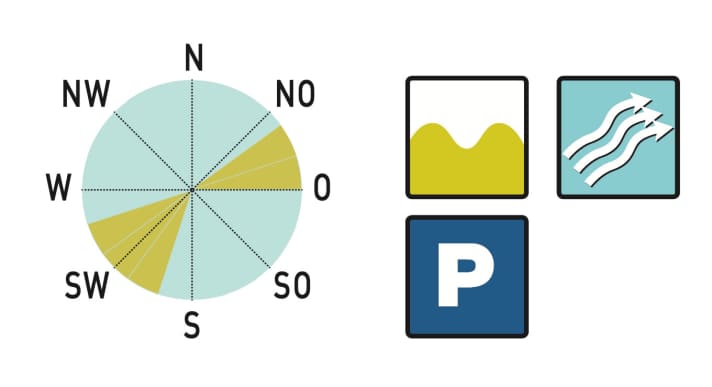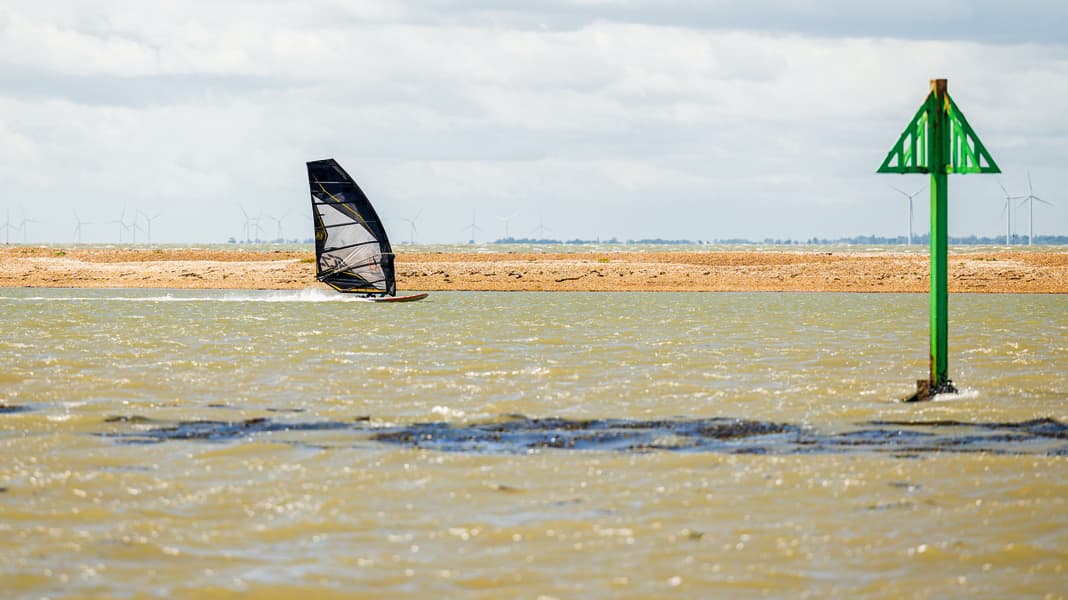We have checked out these windsurfing spots for you (click on the spot for the information and you will be taken to the description):
Surf spots in the south-east of England at a glance:
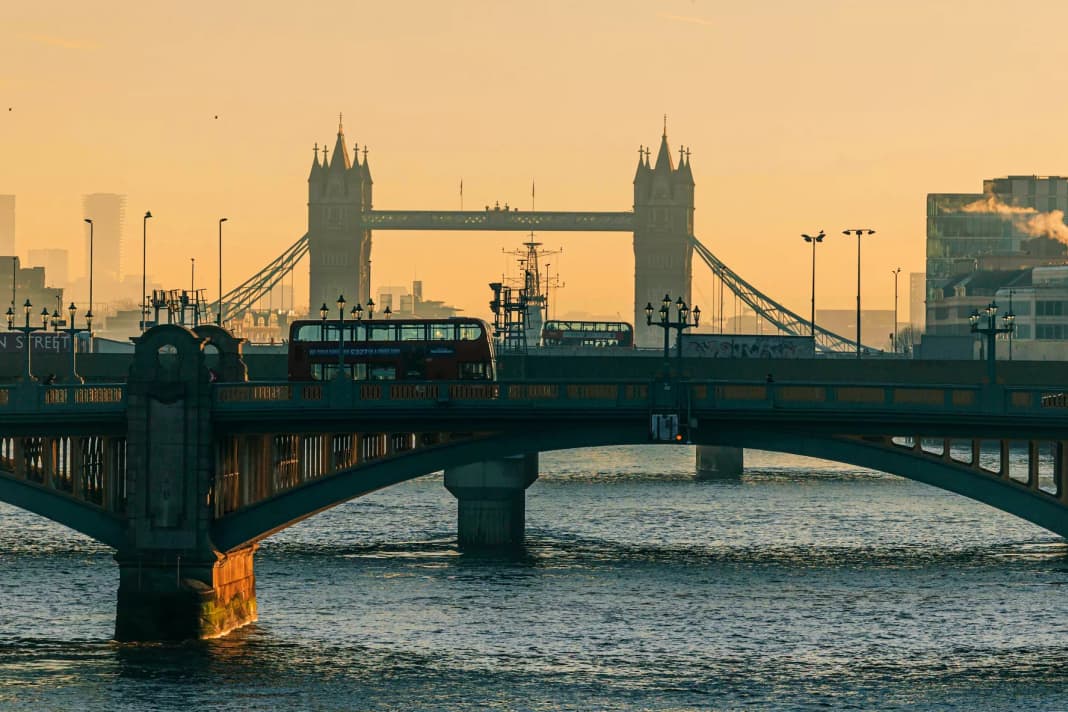





7:30 London/Highbury
Heavy showers are sweeping across the English capital on this Friday morning in May. Red and white paper cups with the Arsenal logo lie in the ditch, reminding me of the European Cup match at the Emirates Stadium the day before. When things are going well for Arsenal, I can hear their fan chants from my bedroom. But things didn't go well for London's favourite club last night. Yesterday was quiet. For me, however, it was the calm before the storm.
My journey this morning takes me through the bumpy, small London streets, past the typical Victorian-style brick houses and the time-honoured Highbury Stadium - the former, very prestigious football stadium of Arsenal London. What has become of it today? A posh and unaffordable apartment complex. From there I continue to Stratford, the Olympic Park, where arch-rivals West Ham United have their home ground. Here, the four-lane motorway takes me from the north of the capital to the county of Essex, north-east of London.
It's rush hour. Luckily I'm early. The best wind isn't forecast until the afternoon, so I'm not stressed. Kilometres of stop-and-go traffic are part and parcel of the rush hour around the metropolis of London with its nine million inhabitants. Until the 1920s, London was still the largest city in the world. When industrialisation got into full swing at the beginning of the 19th century, London grew to six times its size - the traces of this rapid growth can still be seen today in the form of endless terraced houses in the suburbs, where the many workers were housed at the time. Since then, London has of course long since changed and combines industrial history and modern times like almost no other city in the world.
I am amazed at the friendliness of the people. The only thing I don't always understand is their slang.
But if you've ever had a good windsurfing day in Essex, a bit of traffic is unlikely to put you off. And as I've lived in London for almost two years and have already had plenty of opportunities to chase perfect wind conditions, I'm happy to put up with the delay.
The time in the car lets my mind wander. The scenery of pelting rain and disreputable pubs by the roadside reminds me of the gangster film "Essex Boys". Just a few decades ago, north-east London was not a good place to live. But the old stories of the brutal boys and scantily clad girls from Essex are long gone. Today, I am amazed at the friendliness of the people, even if I don't always understand their slang.
Today's wind forecast is promising. Lots of rain in the morning, but then a dry mix of sun and clouds with 25 to 30 knots from the south-south-west. Surfer's heart, what more could you want?
Surfing and sightseeing can be perfectly combined here.
Hardly any other country is as blessed with windsurfing spots as Great Britain, but for me as a freestyler, my home spots around the Thames Estuary are always worth a trip. All the spots in the county of Essex are on the North Sea and are therefore tide-dependent, so some spots work better at high tide, others better at low tide.
This time the traffic was less bad than I had feared, so I decide to do a warm-up session on Canvey Island. Because this spot is practically on the way. Here, the waves of the North Sea push into the Thames estuary as the water rises, creating steep ramps that are somewhat reminiscent of the Columbia River in Oregon and are ideal for celebrating front loops or other jumps.
After a short session, it has stopped raining and the southerly wind is becoming more constant. I want to arrive at The Ray spot in Southend on time, just before low water, to catch the perfect flat water conditions.
On the way up the coast to Southend, I enjoy my drive with sweeping views of the Thames Valley. With its numerous villas and mansions, this is the weekend home of well-heeled Londoners. Coming from the hills of the city, the popular shallow water spot is already clearly visible, and from a distance I can see the first sails flashing along the sandbank of the Thames. Looking out over the water, I'm reminded of the good spring days in my old hometowns of Laboe near Kiel or Wulfen on Fehmarn, where the battle for scarce parking spaces created excitement even before the session began. However, the vibe here is completely different, as I only meet a handful of other Brits on the beach who are loading their equipment from the pick-up. You don't usually have to worry about parking spaces in England, but you do have to dig deep into your pockets at the parking meter.
On the horizon, I can already recognise my British windsurfing buddy Simon, steering his RRD speed equipment into the space wind all by himself and cruising across the smooth water behind the dry sandbank. "Good morning mate, it's bloody windy mate!" he greets me a little later.
The metropolis of London is incredibly hectic, here on the North Sea coast things are all the more relaxed. For many surfers, this is exactly what makes this region so appealing: escaping the big city when the forecast is good and clearing your head for the essentials on the nearby coast. For tourists, this means that sightseeing and surfing sessions are perfectly combined here, and the sport is definitely worth a trip.
Spot Info London & England South East
Journey
The Essex region is perfect for anyone travelling through to Cornwall or Ireland in a camper van and wanting to combine sightseeing and surfing in the London area. Crossings are possible from Dunkerque or Calais to Dover. Information is available online at Direct Ferries . The journey through the tunnel from Folkestone to Calais is quicker, but a little less romantic. It takes around two hours to reach London from the English Channel. Provided you avoid rush hour, the spots on the Thames Estuary are around 90 minutes from the centre of London.
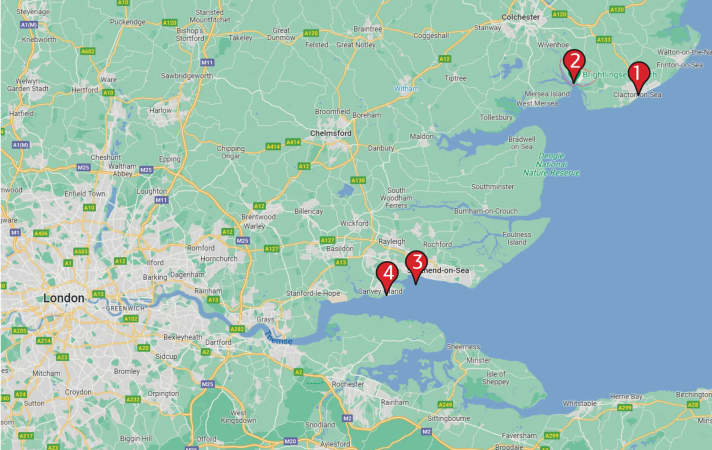
Living & Camping
The London region naturally offers all kinds of options via the tried and tested online booking platforms. With a campervan or motorhome, however, London is not always easy to get around, so it is advisable to look for a place to stay a little further out - as public transport is well developed far into the surrounding area. There are also numerous camping, glamping and motorhome pitches in the Essex region in quiet surroundings and not far from the coast. Here is a selection:
Clacton-on-Sea: The Pretty Thing , Parkdean Resorts , The Orchards Holiday Park
Canvey Island: Thames View Camping , Barleylands Camping
Southend-On-Sea: Essex Glamping , Lower Wyburns Farm
Brightlingsea: Pretoria Caravan Park , Fen Farm Caravan Site
Wind, weather & neoprene tips
The south-east of England is mainly supplied with wind when low pressure systems pass through. However, the best time to visit the region is late summer through to October, when the air and water temperatures are still very pleasant and the statistics show a gliding wind of 40 to 60 per cent. In midsummer, a 4/3 wetsuit is sufficient; in spring and autumn, a 5/3 wetsuit and shoes should be in your luggage.
Tides
The tides determine the rhythm on the North Sea coast of England and have an influence on the surfing conditions. The current can be particularly strong between the 3rd and 4th hour before and after high tide; you can find more detailed information in the individual descriptions of the spots. For this guide, however, we have deliberately selected spots that are not too specialised in terms of the time window available, but that work reliably. Current tide forecasts can also be found at Windfinder .
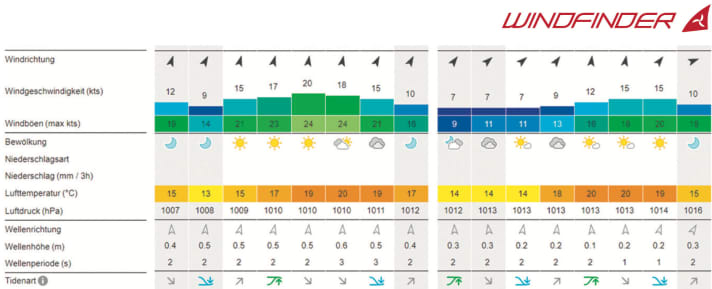
Surf schools & shops
There are no large hire stations in the region, so ideally you should travel with your own equipment. Courses are offered here: Mersea Island Watersports
If you need supplies, you can get them here: Wetndry Boardsports, Southend
Alternative programme
There are entire travel guides about London. Landmarks such as Tower Bridge or Westminster Abbey are worth a visit, as are numerous world-class museums, e.g. the
National Gallery or the Tate Gallery of Modern Art.
Good to know
The price level in England is reasonable, but London goes one better. Whether it's entrance fees or car parking - you should budget accordingly.
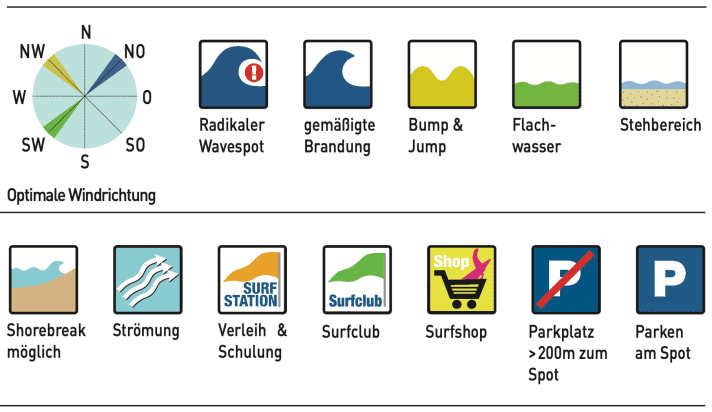
The best windsurfing spots around London
Clacton-On-Sea
Clacton-on-Sea, a town of 50,000 inhabitants, is one of the most popular spots in Greater London. The beach is also very popular with bathers and can get crowded during the holiday season. The surfing area for most locals is at the Martello Tower. Parking on the promenade is free - but if everything is full, you can find other car parks in the surrounding area, e.g. at the Martello Coach and Car Park, subject to payment and height restrictions.
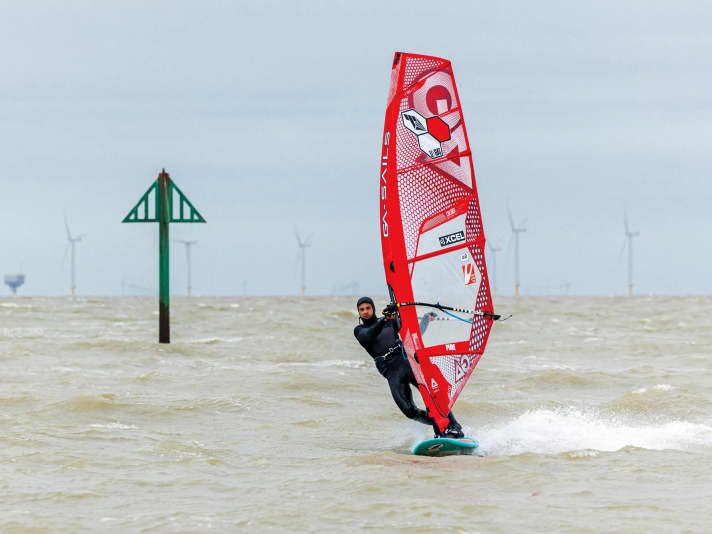
The spot works with north-easterly winds, when waves arrive on the beach that break on sand and allow jumps and wave rides. The best waves are found at medium to high water levels. Even with a strong south-westerly wind - this blows sideshore from the right - smaller surf waves can arrive - ideal in the first few hours after high tide. At low tide, the spot is also rideable, but then it remains with smaller chops that hardly cause any problems even for less experienced pilots. Before and after low tide, Clacton is also interesting for beginners, as you can then stand far out. Kitesurfers and windsurfers share the spot. Beware of some groyne remains, which are sometimes difficult to recognise, especially at high tide. The current can also be quite strong 3-4 hours before and after high and low tide.
There are also campsites and supermarkets on site. Public toilets on the promenade are open all year round. If the wind blows a little more from the west-southwest or east, it is worth moving to Jaywick, around 2.5 kilometres away - with similar conditions, but then with a better orientation to the wind.
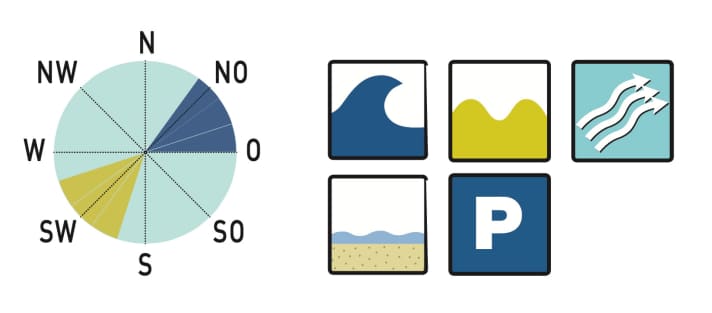
Brightlingsea
The surfing conditions in Brightlingsea are best before and after high tide. There are two possible starting points: One is at the colourful beach huts on Promenade Way, where there is also parking and a meadow for rigging. A broad wind spectrum from north-west to south-east is possible here, with flat water to bump & jump conditions. The second spot, called Pointers by the locals, a little further south in front of the Haven Holiday Park, is much more appealing. Behind a sandbank in front
Behind an offshore sandbank, WSW creates great speed conditions for all surfing levels. The wind then blows unhindered over the sandbank and creates mirror-smooth water over the entire length of the lagoon - ideal for speed surfing, freeriding, practising manoeuvres or freestyling.
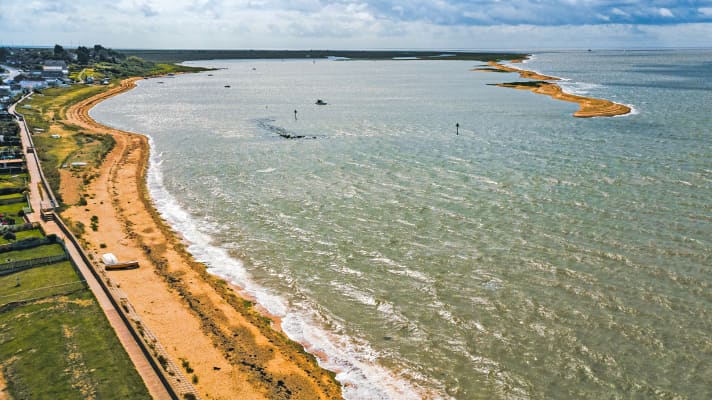
Even intermediates can surf very safely here, as the lagoon is free of waves and has hardly any current. It is also possible at low tide, when the water in the lagoon is mostly chest deep. You can also windsurf outside the lagoon, where there are usually typical bump & jump conditions with small, steep chops.
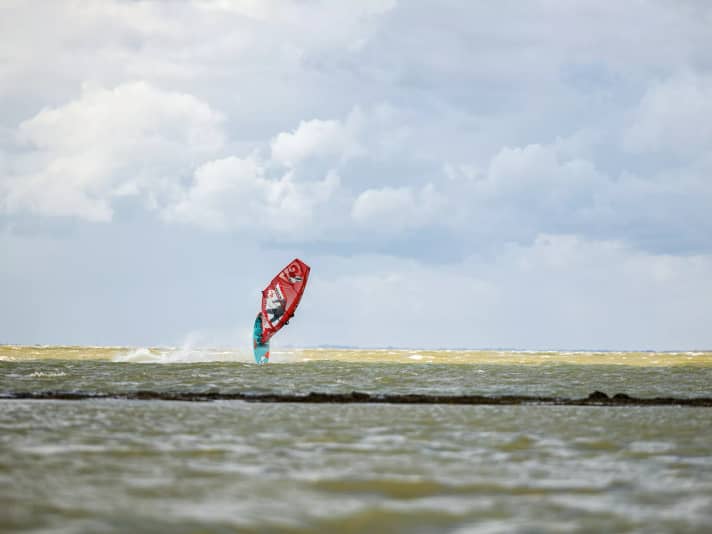
Brightlingsea is also a great place to spend the day with the family on the beach. There is a large meadow for free parking and rigging. The only drawback is that there are no public toilets at the spot.
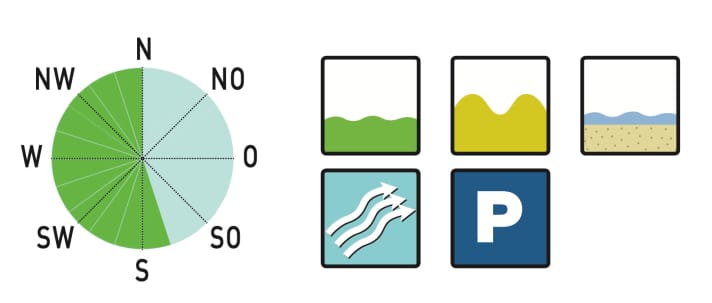
Southend-On-Sea / The Ray
The best flat water spot in the region stretches for five kilometres, parallel to the promenade of Southend-on-Sea. Here you can surf in southerly winds behind a dry sandbank in a tidal inlet. The speed strip is almost completely straight, with a 30-degree bend to the south only halfway along. The sandbanks are completely dry for an average of five hours and provide absolutely flat water. It gets deep quickly behind the sandbanks, so that you can also chase your personal speed record with long slalom fins or foils.
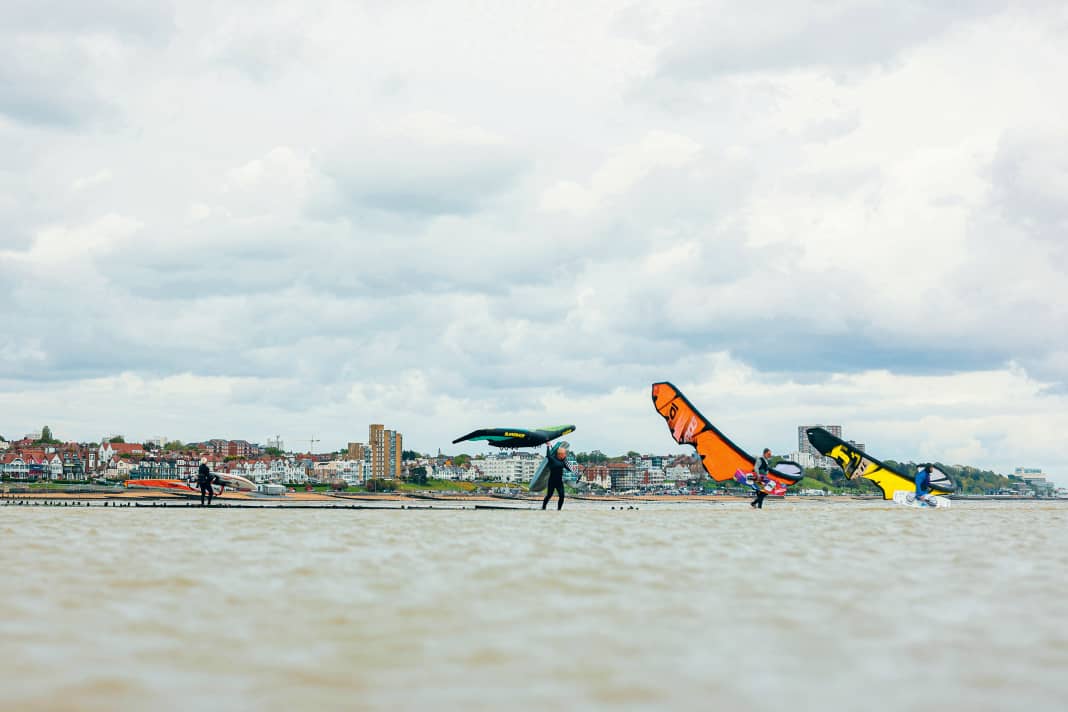





Windsurfers, kiters and wingers co-exist peacefully at this spot. At low tide, the path to the sandbank from the promenade at Chalkwell Beach is around 400 metres long and lined with sharp-edged shells - shoes are an advantage here. The best conditions are 2.5 hours before and after low tide. You can park (day ticket: 14 euros), rig and board at the Thames Estuary Yacht Club directly in front of the surf café. Public toilets are open around the clock at the spot. Southend is also rideable at high tide, but then there are chops, but then all wind directions from west to south to east work. You should generally be aware of the current at this spot, especially 3-4 hours after high and low tide.
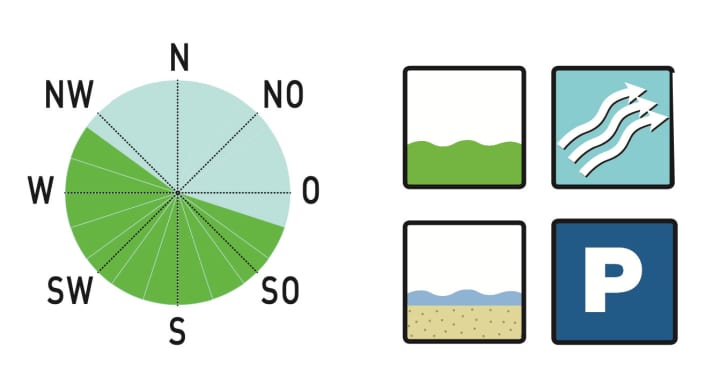
Canvey Island
Canvey Island is the closest spot to London. The south-east facing beach is located directly in the Thames estuary, where the North Sea narrows towards the river. The spot is ideal when the wind is against the tidal current, e.g. with westerly winds and rising water. The current then pushes against the wind, creating steep waves that are ideal for jumping. The spot conditions are almost reminiscent of the legendary Columbia River in Oregon/USA, where endless space shots without any loss of height are part of everyday life. In strong westerly winds, waveboards are also very appropriate here. Just keep an eye on the big boats on the Thames. An easterly wind is also possible, but then it's better when the water is calm.
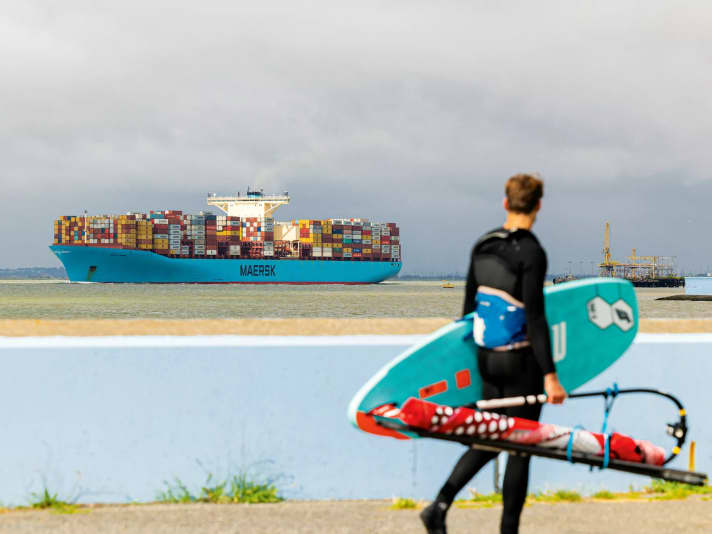
The Canvey Island spot also offers various amenities such as cafés, pubs, public toilets and (paid) car parks. Even when it's calm, there are alternatives here, e.g. a skate park, the wakeboard centre or a golf course.
